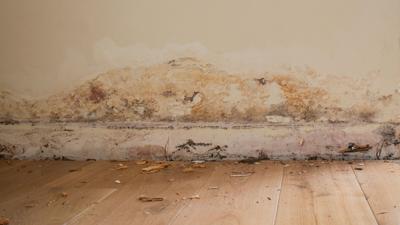
In the UK, there are several forms damp can occur in. We have the penetrating damp and the more serious rising damp. Regardless of the form, damp still needs to be immediately eliminated, but when you're faced with rising damp, things could get tricky.
What is Rising Damp?
When we talk about rising damp, you can immediately picture the vertical path water flows through to get into your flat. Basically, this occurs when water in the ground enters a household by traveling in an upwards direction. This movement is aided by capillary action through the pores of the wall.
The only way rising damp stops is when the force of gravity comes into play to stop this capillary action. The result is a visible mark on the internal wall. The damages caused by rising damp revolve around the rotting and deterioration of plasters and timbers on the walls.
With this level of structural damage at hand and the nature of the rising damp, you begin to wonder if this is a solvable problem or not. And if so, just how much work are we talking about?
The good news is that rising damp is indeed fixable, but not without the help of a specialist and a well-loaded pocket. It's essential to assess the level of damage before deciding what type of treatment to adopt.
What To Do in the Case of a Rising Damp Incident
The first thing to do when you experience rising damp is to check for the presence of a damp-proof course and a damp-proof membrane. These are the tools essential for stopping groundwater from soaking into floors or walls.
You can check this by scanning the bottom walls for a thin-looking strip. If you can't, call in an expert. In fact, we advise you call in an expert to check for the presence of a damp-proof course and damp-proof membrane. Local London damp specialists
If you do have a damp-proof course, then your rising damp issue indicates that your damp-proof course is faulty and requires fixing or, in most cases, replacement.
If the fault is simply due to the presence of a small patch, then you should be able to fix it by painting over the patch to restrict the further flow of water. The use of bitumen latex as a coating agent is recommended for an effective solution.
When it comes to the damaged damp-proof course, the following remedies can be applied:
Drilling of holes into the wall, creating a new course with the application of damp-proof cream
Cutting grooves into the brickwork where the new damp-proof course shall be applied instead of the chemical approach above
In more serious scenarios, a complete replacement of the damp-proof membrane is inevitable. This, though costly, prevents the rapid spread of the rising damp.
The walls and floors should also be sealed or 'tanked' to protect them from excess moisture.
We are Rounding Off
In most cases, the problem could occur as a result of the ground being so high above the damp-proof course. All you have to do here is dig away the excess soil on either side of the damp to create a level field for the damp-proof course.




(0) comments
We welcome your comments
Log In
Post a comment as Guest
Keep it Clean. Please avoid obscene, vulgar, lewd, racist or sexually-oriented language.
PLEASE TURN OFF YOUR CAPS LOCK.
Don't Threaten. Threats of harming another person will not be tolerated.
Be Truthful. Don't knowingly lie about anyone or anything.
Be Nice. No racism, sexism or any sort of -ism that is degrading to another person.
Be Proactive. Use the 'Report' link on each comment to let us know of abusive posts.
Share with Us. We'd love to hear eyewitness accounts, the history behind an article.